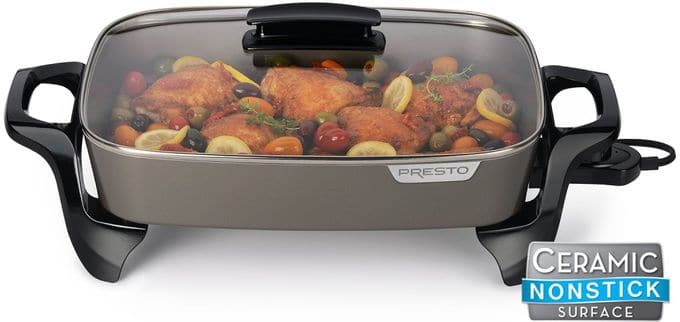All modern cookware has non stick coating. Of course, coating quality directly affects the service life, protecting the work surface from scratches, chippings and other damage. Therefore, the choice of model essentially depends on coating.
The coating technology mainly depends on the cookware thickness. Today, manufacturers use two methods. Typically, manufacturers use rollers for coating cookware from thin aluminum. Therefore, this cookware is lightweight and convenient. But the frying pans with a thick bottom of cast aluminum or cast iron uses method of multiple spraying. These models provide cooking with a little oil.
Of course, resistance to mechanical damage directly depends on the coating material and its thickness. The minimum thickness does not exceed 10-15 microns. But most companies use layer thickness from 25 to 50 microns.
High-quality coating material contains various additives to increase the strength. For example, manufacturers are actively use a ceramic and diamond dust or other mineral supplements.
Probably, many consumers know such the patented coatings DAIKIN (SILKWAREВ® brand), Xylan Plus and Xpride (Polaris), ANATOВ® (Redmond), carbon-coated BINCHO (Panasonic), Xwall (Cuckoo), QuanTanium, Excalibur, Ecolon, Swiss Diamond, Fusion, Skandia, HALO, etc.
Non stick coating based on polytetrafluoroethylene
These coatings use polytetrafluoroethylene polymer (PTFE). This material has maximum chemical resistance to the water, acids, alkalis, oxidizers and solvents. Additionally, it’s inert and does not enter into chemical reactions with foods. PTFE is not harmful to health, because it is not absorbed and not broken down in the human body.
Authoritative French consumer magazine “60 Millions of ConsomateursВ» has confirmed a safety of the cookware with PTFE non-stick coating.
The first such coating has been developed and patented by the US DuPont Company. It was called Teflon.
French engineer Marc Gregoire is founder of the Tefal brand. He has invented a method of applying PTFE onto a metal substrate. The first cookware with non-stick coating were manufactured in 1959. Today, the Teflon name is synonymous of non-stick coatings all types. But this is not entirely correct. Teflon is only one of many types of coatings and is produced by DuPont.
Many other companies produce their own coating based on PTFE. For example, the Tefal Company uses coatings Expert Pro, Prometal Pro, Intensium, etc. Stalaflon, adgelast, etc are widely used by other major manufacturers.
Ceramic non stick coating
Non stick ceramic coating for cookware has gained popularity in recent years. The surface with this coating looks very stylish.
The nanocomposite polymer is the basis of such a coating. But this coating is not related to ceramics based on clay. Ceramic coating is carried out with the help of the sol-gel technology. The content of ceramics (nanoparticles of sand) in a coating is from 5% and above. Today standards for ceramic coatings are absent. Thermolon, ekolon (or polycaprolactam) and greblon are most frequently used in modern cookware.
Ceramic non stick is considered more resistant to mechanical stress compared to coatings based on PTFE. Therefore, the cost of cookware with ceramic coating is significantly higher.
Of course, the technologies are constantly being improved, providing more reliable and long-lasting surface protection. For example, Swiss Zyliss has developed and uses an innovative ball blasting treatment and ceramic reinforced 3 layer Rockpearl coating. The video convincingly demonstrates its advantages.
